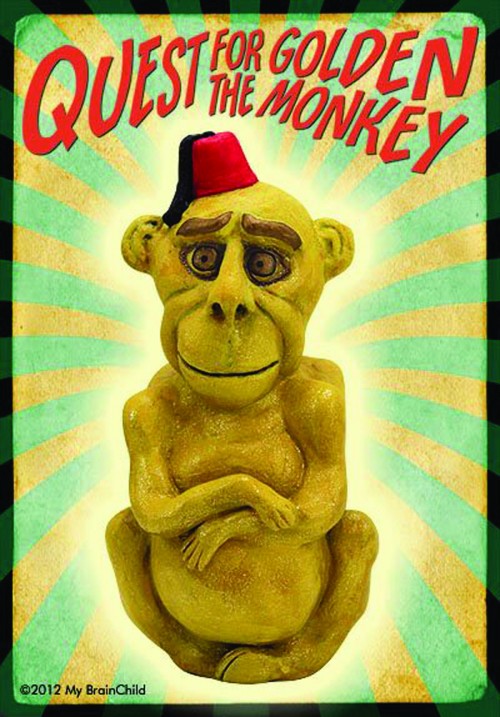
Search for the ‘Golden Monkey’
April 2, 2012
‘palooza to rock downtown Houma
April 3, 2012Ninety-nine years and six months ago, a Chicago pencil-sharpener salesman’s story about an infant who was raised by an advanced species of apes in the mossy African jungle published in “All-Story Magazine.”
The story would engender a century’s worth of sequels and replications, good and bad, and provoked a contemporary South African to become a full-time character actor devoting his life to mimicking one of fiction’s first (non-traditional) superheroes. Edgar Rice Burroughs, the creator of Tarzan, wrote 25 sequels to the first story. A Tarzan authority set to release a documentary on the subject this month says six television shows, 40 authorized films and close to 80 unauthorized films have been produced internationally about the Lord of the Jungle.
Not long after the story garnered mainstream appeal, its impact was felt in Morgan City. The swampland was determined by filmmakers to have the moss needed to portray Burroughs’ African jungle, the necessary number of black residents to stand in for an African tribe and the railway to transit the set from Los Angeles. Thus, “Tarzan of the Apes,” one of the first six films to gross more than $1 million, and the first feature film to shoot on location in Louisiana, was accented in 1917 in the lush Atchafalaya Basin.
Tarzan returns to St. Mary Parish this month, figuratively, literally, loudly and silently, for the area’s first Tarzan, Lord of the Louisiana Jungle Festival.
Children can climb rock walls and reveal their inner-Tarzan in a yell zone. Tourists and residents are encouraged to take self-guided tours throughout the bayous. A Tarzan exhibit at the Louisiana State Museum of Patterson showcases memorabilia from throughout the century. A re-mastered version of the original silent film is accompanied by a live band playing a Louisiana man’s new score. But the featured attraction, perhaps, is the unveiling of a documentary four years in the making.
Tarzan’s escapades have appealed to Al Bohl since he was a young boy, but it was a live monkey mystery that baited him into directing an in-depth documentary on the lord of the apes, a journey that touches on Social Darwinism, Nazi Germany and whether or not an actor 95 years ago actually killed a lion on-screen.
Legend has it that some of the apes brought into Morgan City for authenticity refused to return to their cages after the filming wrapped. The primates were allegedly left behind, free to roam the bayou region. Bohl claims this urban legend piqued his interest and thus commenced the work on his documentary, “Tarzan: Lord of the Louisiana Jungle.”
“That was one of the major questions I had to go after to find this, but it wasn’t enough just to do a documentary on that,” he says. “I had to dig deeper than that. When I found out there was so many things interesting about the making of the film, that’s when I got with my daughter and we decided to do it.”
He admits to perusing ERBzine.com, a 10,000-page online encyclopedia of the Burroughs estate curated and maintained by Bill Hillman. While there, he discovered more mysterious lore.
Elmo Lincoln landed the 1917 role of adult Tarzan. While filming a scene in which he saves Jane from a lion, Lincoln and a producer of the film claimed, the drugged beast turned violent. Lincoln reportedly fought the lion in an impromptu battle before killing it with a prop weapon. He allegedly placed his foot atop the lifeless animal and leaped away when the air remaining in lion’s lungs roared from its body.
Bohl refuses to offer insight into what he learned about the treatment of wildlife, but says the audience is armed with enough information to make individual judgments.
“We really present both sides of the argument, and we’ll let the audience make their final decision, but I do feel like we came to the resolution of those,” Bohl says.
Although intriguing, the attempted elucidation of urban legends only scratches the surface of Bohl’s film.
Aside from spending time on Burroughs and his creations, the film delves into social issues. Bohl and his daughter Allison, who has produced award-winning documentaries on the Cajun lifestyle, shot more than 70 hours of film and interviewed fans, scholars, biologists and Hillman in an attempt to provide comprehensive context for the original film and the Tarzan brand.
Bohl also spoke to relatives of the local black actors who were hired as extras to portray Africans and cannibals. The 300 cannibal extras were paid $1.75 per day, according to ERBzine, and about 800 local residents played tribal extras.
“In 1917 and (19)18, when the film was shot and released, in just those two years, we had nearly 100 African-Americans lynched in America,” Bohl says. “It was a very difficult time for African-Americans.”
The filmmaker says the relatives, while happy to live under modern circumstances, free of widespread ridicule, economic depression and senseless death, long for some of the lost aspects of community.
“Most of (plantation life) was bad for them, but in a good way, there was a lot of love in the community and dependence on each other. They actually miss that part of their life now. They don’t miss being treated, in essence, in economic slavery at that time, but they do miss the closeness of their families.”
Bohl also explores the beliefs that guided Adolph Hitler’s Germany – eugenics.
The science deals with the possibility and benefits of sterilizing segments of a population so that a more affluent, intelligent and worldly population reproduces at a higher rate and improves the strength of a nation.
Although the belief was at the core of Hitler’s beliefs, it is not strictly relegated to genocidal dictators. Eugenics has support in the United States and beyond, and some contend it was invoked during Rome’s peak.
“People don’t often think through that, what it means for people to decide who gets to live and who dies,” Bohl says. “We explore that in this film.”
Burroughs’ legacy still reverberates.
“All of the merchandising that you see, every time they come up with a new movie or toy, all of that was pioneered by Burroughs,” Bohl says. “He incorporated himself in 1923 and set up a licensing company for his characters. Tarzan was on Tarzan bread, Tarzan gasoline, Tarzan glue. A good representation will be in our exhibition at the Patterson State Museum.”
Burroughs’ first story, with a protagonist named John Carter, was also published for the first time 100 years ago. Titled “A Princess of Mars,” the story has been adapted for the big screen by Disney and is in theaters now under the lead character’s name.
And this month, his most-popular collection of stories threads together a two-day festival.
The Tarzan exhibition opens Thursday April 12 at the Louisiana State Museum in Patterson.
On Friday, residents and tourists can procure maps and take self-guided tours of the various filming locations. Bohl’s documentary also premieres that day inside the Morgan City Municipal Auditorium.
A 5K run begins at 8 a.m. Saturday in downtown Morgan City. Damon Troy and Final Five perform, and free Tarzan movies are shown throughout the day inside the auditorium. A Tarzan yell contest, a Tarzan and Jane look-a-like contest and a tug-of-war battle are also available as means to entertain the entire family. DeWet Du Toit, a South African on a mission to star as the next Tarzan in a movie, shows off his audition film and gives a special presentation.
Du Toit, 24, says his primary goal is to land the role in a the latest in-production Tarzan film, which is being led by Warner Brothers and will reportedly be directed by Craig Brewer.
“Tarzan’s Greatest Adventure,” is shown outside at 8 p.m. Saturday night.
“It’s considered the one that Tarzan aficionados like, the best translation from the books,” says Carrie Stansbury, executive director of the Cajun Coast Visitors and Convention Bureau, which assisted in bringing the festival to Morgan City. “We’re also really encouraging people to go on a swamp tour (with Cajun Jack) to see what it would have been like when the filmmakers came to Morgan City to film the Tarzan movie.”
The Tarzan appeal, Bohl attests, arises from qualities inherent in young men. For the record, Bohl refers to himself as a “Tar-Fan.”
“It seems like all boys, naturally, want to swing on vines, ropes, and I guess it was the outdoorsy type of thing,” he says. “You don’t need a lot of equipment to play Tarzan. All you need is a yell and a rope and maybe a spear, or something like that, and the woods.
“Even though it’s 100 years old, it’s a great story. I’ve now read it probably 10 times through the last four years of working on this and listened on tape many times. It’s an excellent book and I’m not tired of it yet.”
– editor@gumboguide.com
DeWet Du Toit, a 24-year-old South African, has made it a goal to land the next featured role as Tarzan. Du Toit comes to Morgan City as part of the “Tarzan, Lord of the Louisiana Jungle Festival.”
Al Bohl and his daughter, Allison shoot footage in St. Mary Parish bayous for their documentary “Tarzan: Lord of the Louisiana Jungle,” which premieres April 13 at the Morgan City Municipal Auditorium.
The cover of “The All-Story Magazine,” containing the first Tarzan story published in 1912.











